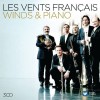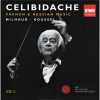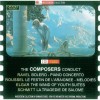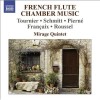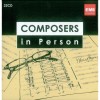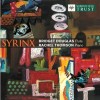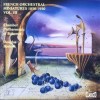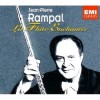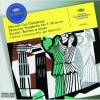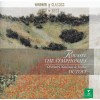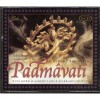Composers
Albert Charles Paul Marie Roussel (pronounced: [albɛːʁ ʁusɛl]; 5 April 1869 – 23 August 1937) was a French composer. He spent seven years as a midshipman, turned to music as an adult, and became one of the most prominent French composers of the interwar period. His early works were strongly influenced by the impressionism of Debussy and Ravel, while he later turned toward neoclassicism.
Born in Tourcoing (Nord), Roussel's earliest interest was not in music but mathematics. He spent time in the French Navy, and in 1889 and 1890 he served on the crew of the frigate Iphigénie and spent several years in Cochinchina.[1] These travels affected him artistically, as many of his musical works would reflect his interest in far-off, exotic places.
After resigning from the Navy in 1894, he began to study harmony in Roubaix, first with Julien Koszul (grandfather of composer Henri Dutilleux), who encouraged him to pursue his formation in Paris with Eugène Gigout, then continued his studies until 1908 at the Schola Cantorum de Paris where one of his teachers was Vincent d'Indy. While studying, he also taught. His students included Erik Satie and Edgard Varèse.
During World War I, he served as an ambulance driver on the Western Front. Following the war, he bought a summer house in Normandy and devoted most of his time there to composition.
Starting in 1923, another of Roussel's students was Bohuslav Martinů, who dedicated his Serenade for Chamber Orchestra (1930) to Roussel.[2]
His sixtieth birthday was marked by a series of three concerts of his works in Paris that also included the performance of a collection of piano pieces, Homage a Albert Roussel, written by several composers, including Ibert, Poulenc, and Honegger.[1][3]
Roussel died in the village (commune) of Royan (Charente-Maritime), in western France, in 1937, and was buried in the churchyard of Saint Valery in Varengeville-sur-Mer, Normandy.
Roussel was by temperament a classicist. While his early work was strongly influenced by impressionism, he eventually found a personal style which was more formal in design, with a strong rhythmic drive, and with a more distinct affinity for functional tonality than found in the work of his more famous contemporaries Debussy, Ravel, Satie, and Stravinsky.
Roussel's training at the Schola Cantorum, with its emphasis on rigorous academic models such as Palestrina and Bach, left its mark on his mature style, which is characterized by contrapuntal textures. Roussel's orchestration is rather heavy compared to the subtle and nuanced style of other French composers like Gabriel Fauré or Claude Debussy. While Roussel did not fully share the stylistic and orchestral aesthetic of so-called "French" music, he was never a mere copyist of Teutonic models. Roussel's manner could hardly be called heavy when compared with the sound of the German romantic orchestral tradition represented by Anton Bruckner and Gustav Mahler.
Roussel was also interested in jazz and wrote a piano-vocal composition entitled Jazz dans la nuit, which was similar in its inspiration to other jazz-inspired works such as the second movement of Ravel's Violin Sonata, or Milhaud's La Création du Monde.
Roussel's most important works were the ballets Le festin de l'araignée, Bacchus et Ariane, and Aeneas and the four symphonies, of which the Third in G minor, and the Fourth in A major, are highly regarded and epitomize his mature neoclassical style. His other works include numerous ballets, orchestral suites, a piano concerto, a concertino for cello and orchestra, a psalm setting for chorus and orchestra, incidental music for the theatre, and much chamber music, solo piano music, and songs.
Recently Added
Biography
Albert Charles Paul Marie Roussel (pronounced: [albɛːʁ ʁusɛl]; 5 April 1869 – 23 August 1937) was a French composer. He spent seven years as a midshipman, turned to music as an adult, and became one of the most prominent French composers of the interwar period. His early works were strongly influenced by the impressionism of Debussy and Ravel, while he later turned toward neoclassicism.
Born in Tourcoing (Nord), Roussel's earliest interest was not in music but mathematics. He spent time in the French Navy, and in 1889 and 1890 he served on the crew of the frigate Iphigénie and spent several years in Cochinchina.[1] These travels affected him artistically, as many of his musical works would reflect his interest in far-off, exotic places.
After resigning from the Navy in 1894, he began to study harmony in Roubaix, first with Julien Koszul (grandfather of composer Henri Dutilleux), who encouraged him to pursue his formation in Paris with Eugène Gigout, then continued his studies until 1908 at the Schola Cantorum de Paris where one of his teachers was Vincent d'Indy. While studying, he also taught. His students included Erik Satie and Edgard Varèse.
During World War I, he served as an ambulance driver on the Western Front. Following the war, he bought a summer house in Normandy and devoted most of his time there to composition.
Starting in 1923, another of Roussel's students was Bohuslav Martinů, who dedicated his Serenade for Chamber Orchestra (1930) to Roussel.[2]
His sixtieth birthday was marked by a series of three concerts of his works in Paris that also included the performance of a collection of piano pieces, Homage a Albert Roussel, written by several composers, including Ibert, Poulenc, and Honegger.[1][3]
Roussel died in the village (commune) of Royan (Charente-Maritime), in western France, in 1937, and was buried in the churchyard of Saint Valery in Varengeville-sur-Mer, Normandy.
Roussel was by temperament a classicist. While his early work was strongly influenced by impressionism, he eventually found a personal style which was more formal in design, with a strong rhythmic drive, and with a more distinct affinity for functional tonality than found in the work of his more famous contemporaries Debussy, Ravel, Satie, and Stravinsky.
Roussel's training at the Schola Cantorum, with its emphasis on rigorous academic models such as Palestrina and Bach, left its mark on his mature style, which is characterized by contrapuntal textures. Roussel's orchestration is rather heavy compared to the subtle and nuanced style of other French composers like Gabriel Fauré or Claude Debussy. While Roussel did not fully share the stylistic and orchestral aesthetic of so-called "French" music, he was never a mere copyist of Teutonic models. Roussel's manner could hardly be called heavy when compared with the sound of the German romantic orchestral tradition represented by Anton Bruckner and Gustav Mahler.
Roussel was also interested in jazz and wrote a piano-vocal composition entitled Jazz dans la nuit, which was similar in its inspiration to other jazz-inspired works such as the second movement of Ravel's Violin Sonata, or Milhaud's La Création du Monde.
Roussel's most important works were the ballets Le festin de l'araignée, Bacchus et Ariane, and Aeneas and the four symphonies, of which the Third in G minor, and the Fourth in A major, are highly regarded and epitomize his mature neoclassical style. His other works include numerous ballets, orchestral suites, a piano concerto, a concertino for cello and orchestra, a psalm setting for chorus and orchestra, incidental music for the theatre, and much chamber music, solo piano music, and songs.
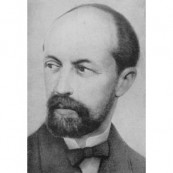

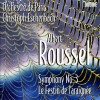
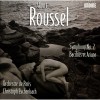
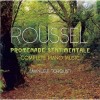
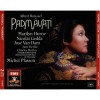
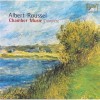
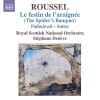
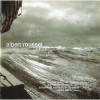

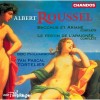
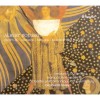



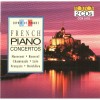
![Great European Organs. 36-Marie-Bernadette Dufourcet [Notre-Dame-des-Champs Paris]](http://static.classicalm.com/repository/collection-cover/small/911-img1341739496579533.jpg)
